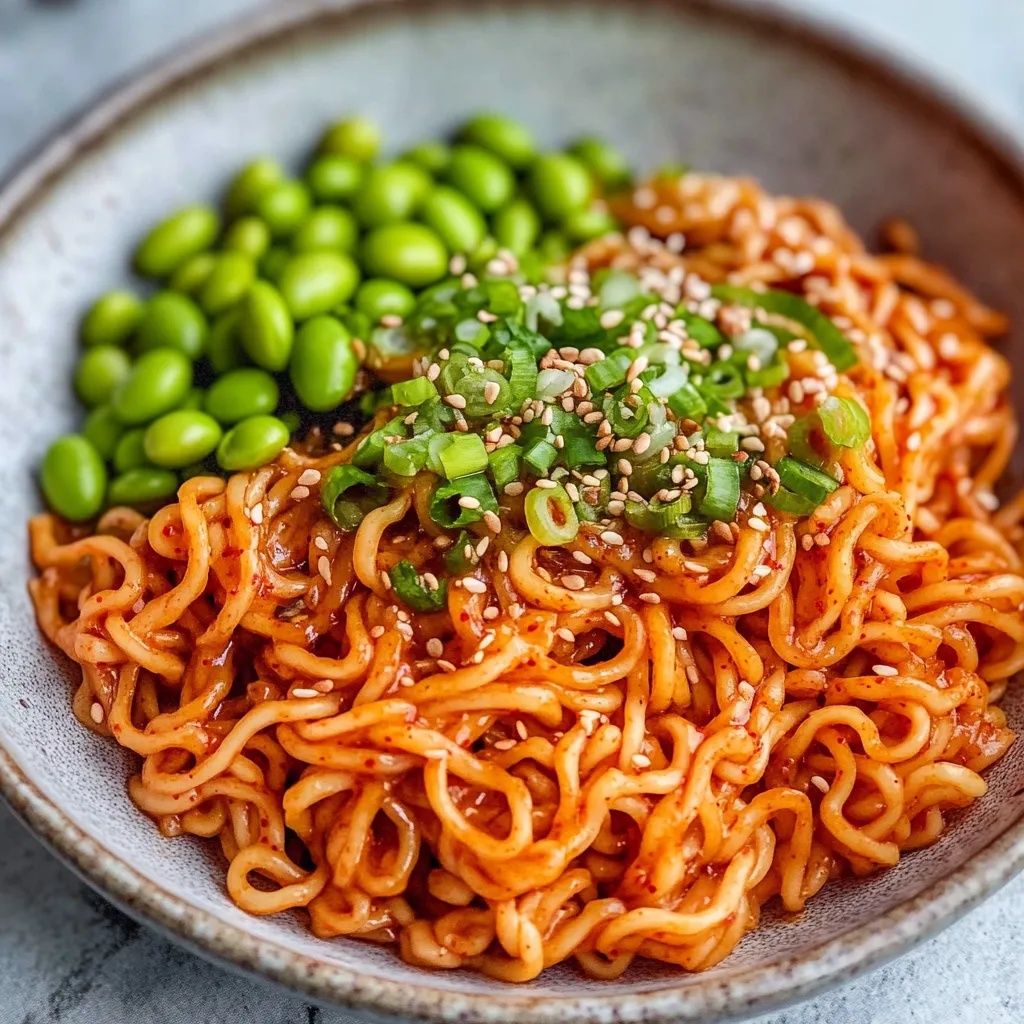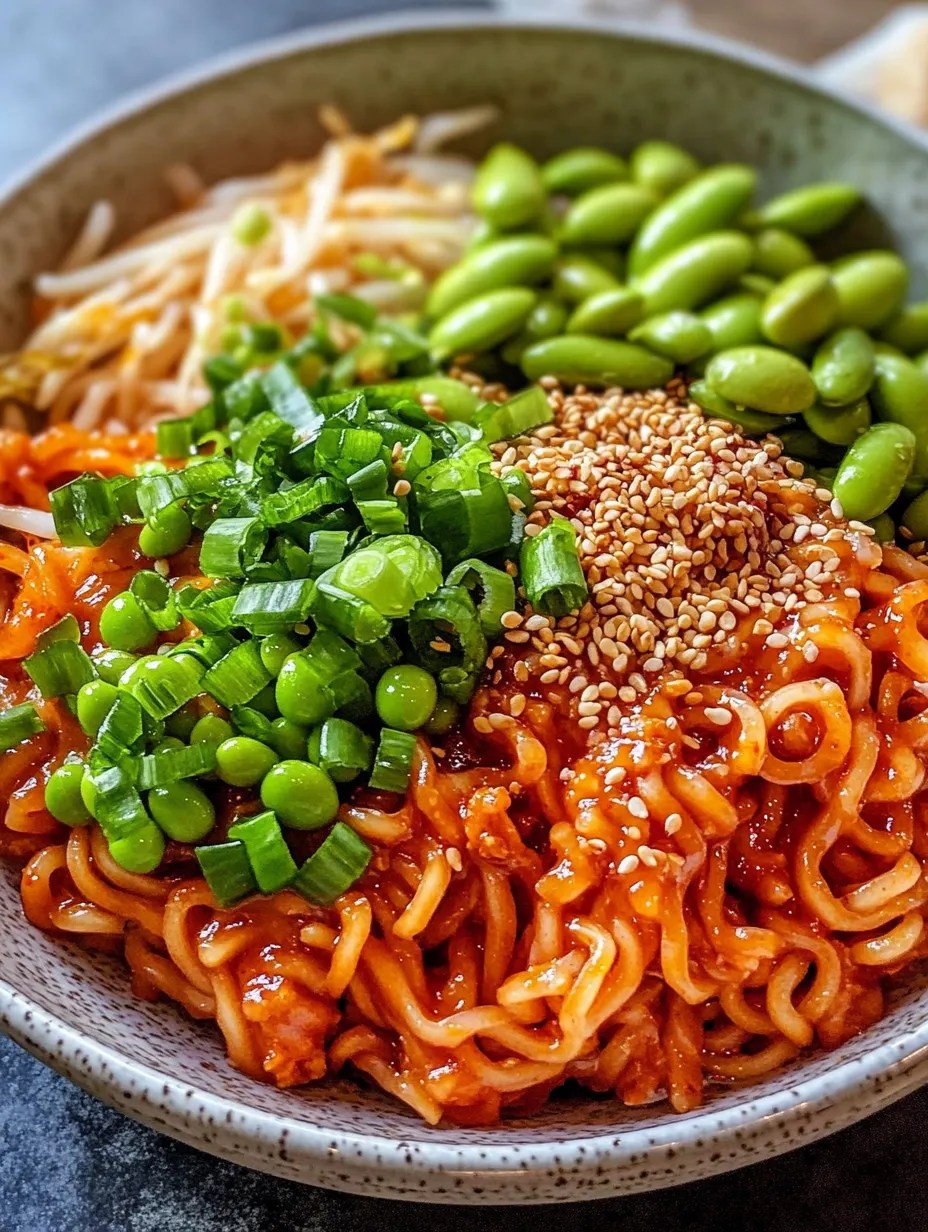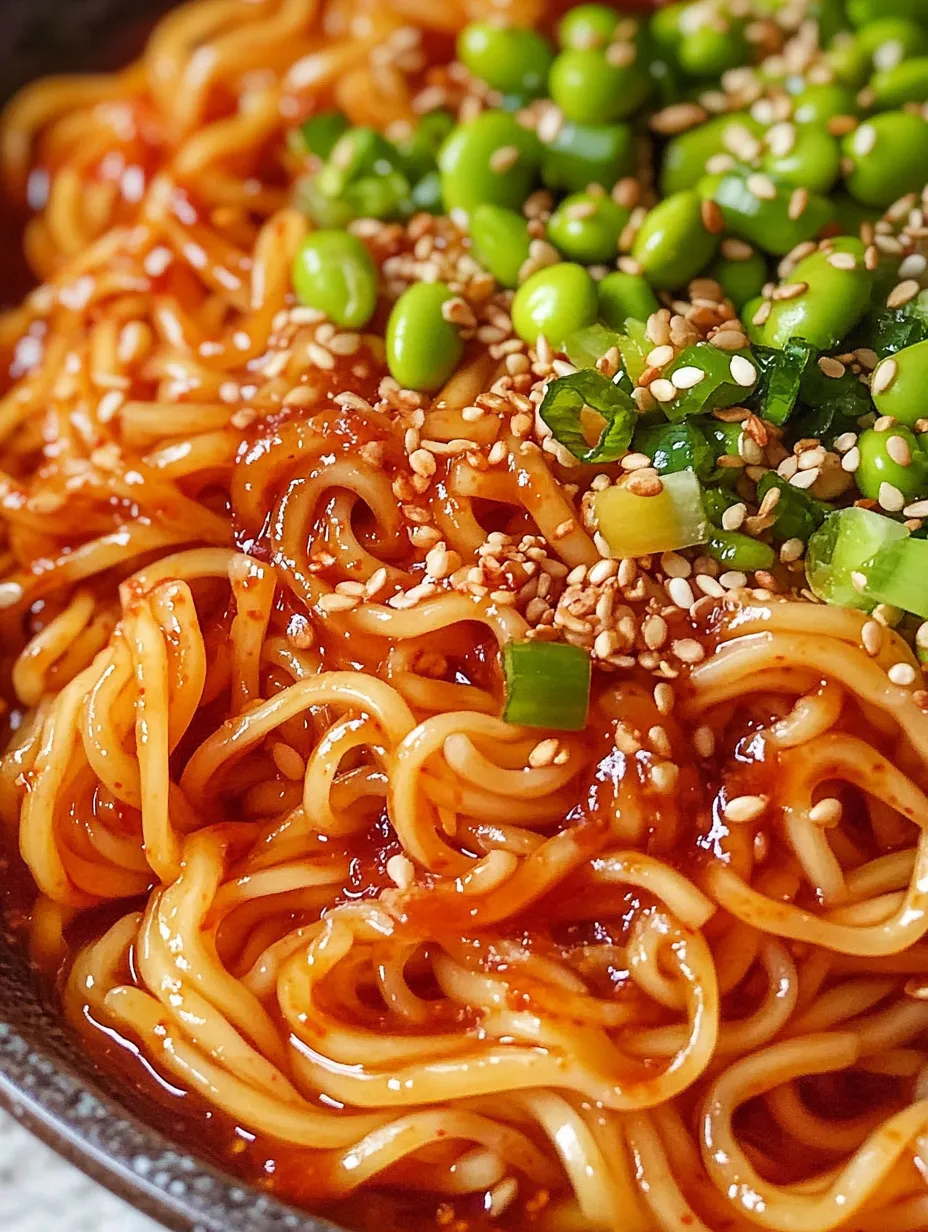 Pin it
Pin it
This tangy and savory Gochujang Noodles dish has become my weeknight dinner hero when I need something vibrant and satisfying without spending hours in the kitchen. Ready in just 15 minutes, these bibim guksu noodles deliver an explosion of Korean-inspired flavors that will transform your dinner routine.
I first made these noodles during a particularly hectic work week when I needed something substantial but quick. The combination of sweet, spicy, and tangy flavors was so addictive that it's now in my regular rotation when friends come over for casual dinners.
Ingredients
- Gochujang: The star ingredient that provides the signature spicy Korean flavor with a touch of sweetness. Look for authentic Korean brands for the best flavor profile.
- Light brown sugar: Balances the heat with necessary sweetness. The molasses notes complement the fermented gochujang perfectly.
- Rice wine vinegar: Adds brightness and acidity to cut through the richness. Use unseasoned for better control of flavors.
- Soy sauce: Provides umami depth and saltiness. Choose low sodium if watching salt intake.
- Maple syrup: Natural sweetener that adds complexity beyond just sweetness. Real maple syrup works best here.
- Orange or apple juice: Secret ingredient that adds fruity brightness and natural sweetness without tasting fruity.
- Fresh garlic: Essential aromatic that brings sharpness and depth. Always use fresh not pre-minced for best flavor.
- Gochugaru: Optional Korean chili flakes that add another dimension of heat and color.
- Wheat or rice noodles: The foundation of the dish. Choose based on dietary preferences both work beautifully.
- Edamame: Adds protein and a pop of bright green color. Buy frozen and shelled for convenience.
- Fresh vegetables: Adds crunch texture and freshness. Cucumber matchsticks are traditional but any crunchy vegetable works.
- Toasted sesame seeds: Adds nuttiness and visual appeal. Toast briefly for enhanced flavor.
Step-by-Step Instructions
- Prepare the sauce:
- Combine gochujang brown sugar rice vinegar soy sauce maple syrup juice garlic and gochugaru in a bowl. Whisk thoroughly until completely smooth with no lumps of gochujang remaining. The sauce should have a glossy appearance and pourable consistency.
- Cook the noodles:
- Bring a large pot of water to a rolling boil before adding your noodles. Cook exactly according to package instructions for al dente texture different noodles have vastly different cooking times. Keep a close eye as they can quickly become mushy if overcooked.
- Cool the noodles:
- Immediately transfer cooked noodles to a colander and rinse under cold running water while gently tossing. Continue until noodles are completely cool to the touch. This stops the cooking process and removes excess starch that would make noodles clump together.
- Combine and serve:
- Transfer cooled noodles to a large mixing bowl and pour sauce over them. Using tongs or chopsticks gently lift and turn the noodles until every strand is evenly coated with the vibrant red sauce. The noodles should glisten with sauce but not be swimming in liquid.
- Assemble the dish:
- Divide the dressed noodles between serving bowls. Arrange thawed edamame and your choice of fresh vegetables around the noodles creating visual contrast. Sprinkle with freshly ground toasted sesame seeds and herbaceous garnishes for the finishing touch.
 Pin it
Pin it
The gochujang is truly the heart of this recipe. I discovered authentic Korean gochujang after years of using substitutes and the difference is remarkable. My family now recognizes the distinctive rectangular red tub in our refrigerator as the harbinger of delicious meals to come.
Balancing The Heat
Gochujang varies significantly between brands with some being substantially spicier than others. If you're new to Korean cuisine start with just one tablespoon in your sauce and taste before adding more. You can always add heat but you can't take it away once mixed.
The sweetness components maple syrup brown sugar and fruit juice work as effective counterbalances to the spice. If you find your sauce too spicy adding a touch more maple syrup can help tame the heat while maintaining flavor complexity.
For true spice enthusiasts adding the optional gochugaru opens up another dimension of heat. These Korean chili flakes bring a different type of spiciness that complements the fermented heat of gochujang creating a more nuanced spice experience that builds pleasantly.
 Pin it
Pin it
Perfect Pairings
These noodles shine as part of a Korean inspired spread. Serve alongside simple banchan side dishes like quick pickled vegetables or kimchi for an authentic experience. The cool crisp sides provide welcome contrast to the spicy noodles.
For protein additions beyond edamame consider thinly sliced omelette strips marinated tofu cubes or pan fried mushrooms with sesame oil. The neutral flavor base of the noodles welcomes these additions without becoming overwhelming.
While traditionally served cold especially in summer months these noodles are equally delicious served warm during colder seasons. Simply skip the cold water rinse and toss the hot noodles directly with the sauce for a comforting warm meal.
Noodle Knowledge
The traditional noodle for bibim guksu is somyeon a thin wheat noodle but the beauty of this dish lies in its adaptability. Rice noodles make this dish gluten free while soba buckwheat noodles add nutty depth. Even regular spaghetti works in a pinch.
The cold water rinse step might seem unnecessary but it's crucial for texture. It removes surface starch that would otherwise make your noodles clump together in an unappetizing mass. This is especially important if you're planning to serve the dish cold.
Frequently Asked Questions
- → What type of noodles work best for this dish?
Wheat or rice noodles are ideal for this dish. Rice noodles can keep it gluten-free, and they're also great if you want to skip boiling and just use hot water to soften.
- → Can I make this less spicy?
Yes, you can reduce the heat by using less gochujang. Start with one tablespoon and adjust to your spice tolerance.
- → What vegetables pair well with these noodles?
Cucumber, carrots, and cabbage work beautifully, adding crunch and freshness to the savory noodles. You can also try bell peppers or leafy greens for variety.
- → Can I add protein to this dish?
Absolutely! Toss in edamame, cooked tofu, beans, or seitan for a protein boost. These options complement the flavors perfectly.
- → Is this dish vegan-friendly?
Yes, the ingredients used result in a vegan dish. However, ensure your gochujang brand does not include non-vegan ingredients.
